第216章 XXIX.(22)
149. The desert gave him, etc. Scott says here: "In adopting the legend concerning the birth of the Founder of the Church of Kilmallie, the author has endeavored to trace the effects which such a belief was likely to produce, in a barbarous age, on the person to whom it related. It seems likely that he must have become a fanatic or an impostor, or that mixture of both which forms a more frequent character than either of them, as existing separately. In truth, mad persons are frequently more anxious to impress upon others a faith in their visions, than they are themselves confirmed in their reality; as, on the other hand, it is difficult for the most cool-headed impostor long to personate an enthusiast, without in some degree believing what he is so eager to have believed. It was a natural attribute of such a character as the supposed hermit, that he should credit the numerous superstitions with which the minds of ordinary Highlanders are almost always imbued. A few of these are slightly alluded to in this stanza. The River Demon, or River-horse, for it is that form which he commonly assumes, is the Kelpy of the Lowlands, an evil and malicious spirit, delighting to forebode and to witness calamity. He frequents most Highland lakes and rivers; and one of his most memorable exploits was performed upon the banks of Loch Vennachar, in the very district which forms the scene of our action: it consisted in the destruction of a funeral procession, with all its attendants.
The 'noontide hag,' called in Gaelic Glas-lich, a tall, emaciated, gigantic female figure, is supposed in particular to haunt the district of Knoidart. A goblin dressed in antique armor, and having one hand covered with blood, called, from that circumstance, Lham-dearg, or Red-hand, is a tenant of the forests of Glenmore and Rothiemurcus. Other spirits of the desert, all frightful in shape and malignant in disposition, are believed to frequent different mountains and glens of the Highlands, where any unusual appearance, produced by mist, or the strange lights that are sometimes thrown upon particular objects, never fails to present an apparition to the imagination of the solitary and melancholy mountaineer."161. Mankind. Accented on the first syllable; as it is almost invariably in Shakespeare, except in Timon of Athens, where the modern accent prevails. Milton uses either accent, as suits the measure. We find both in P. L. viii. 358: "Above mankind, or aught than mankind higher."166. Alpine's. Some eds. misprint "Alpine;" also "horsemen" in 172 below.
168. The fatal Ben-Shie's boding scream. The MS. reads:
"The fatal Ben-Shie's dismal scream, And seen her wrinkled form, the sign Of woe and death to Alpine's line."Scott has the following note here: "Most great families in the Highlands were supposed to have a tutelar, or rather a domestic, spirit, attached to them, who took an interest in their prosperity, and intimated, by its wailings, any approaching disaster. That of Grant of Grant was called May Moullach, and appeared in the form of a girl, who had her arm covered with hair. Grant of Rothiemurcus had an attendant called Bodach-an-dun, or the Ghost of the Hill; and many other examples might be mentioned. The Ben-Shie implies the female fairy whose lamentations were often supposed to precede the death of a chieftain of particular families. When she is visible, it is in the form of an old woman, with a blue mantle and streaming hair.
A superstition of the same kind is, I believe, universally received by the inferior ranks of the native Irish.
"The death of the head of a Highland family is also sometimes supposed to be announced by a chain of lights of different colours, called Dr'eug, or death of the Druid. The direction which it takes marks the place of the funeral." [See the Essay on Fairy Superstitions in Scott's Border Minstrelsy.]
169. Sounds, too, had come, etc. Scott says: "A presage of the kind alluded to in the text, is still believed to announce death to the ancient Highland family of M'Lean of Lochbuy. The spirit of an ancestor slain in battle is heard to gallop along a stony bank, and then to ride thrice around the family residence, ringing his fairy bridle, and thus intimating the approaching calamity. How easily the eye as well as the ear may be deceived upon such occasions, is evident from the stories of armies in the air, and other spectral phenomena with which history abounds.
Such an apparition is said to have been witnessed upon the side of Southfell mountain, between Penrith and Keswick, upon the 23d June, 1744, by two persons, William Lancaster of Blakehills, and Daniel Stricket his servant, whose attestation to the fact, with a full account of the apparition, dated the 21st of July, 1745, is printed in Clarke's Survey of the Lakes. The apparition consisted of several troops of horse moving in regular order, with a steady rapid motion, making a curved sweep around the fell, and seeming to the spectators to disappear over the ridge of the mountain. Many persons witnessed this phenomenon, and observed the last, or last but one, of the supposed troop, occasionally leave his rank, and pass, at a gallop, to the front, when he resumed the steady pace. The curious appearance, making the necessary allowance for imagination, may be perhaps sufficiently accounted for by optical deception."171. Shingly. Gravelly, pebbly.
173. Thunderbolt. The 1st ed. has "thunder too."188. Framed. The reading of the 1st ed.; commonly misprinted "formed," which occurs in 195.
190. Limbs. The 1st ed. has "limb."